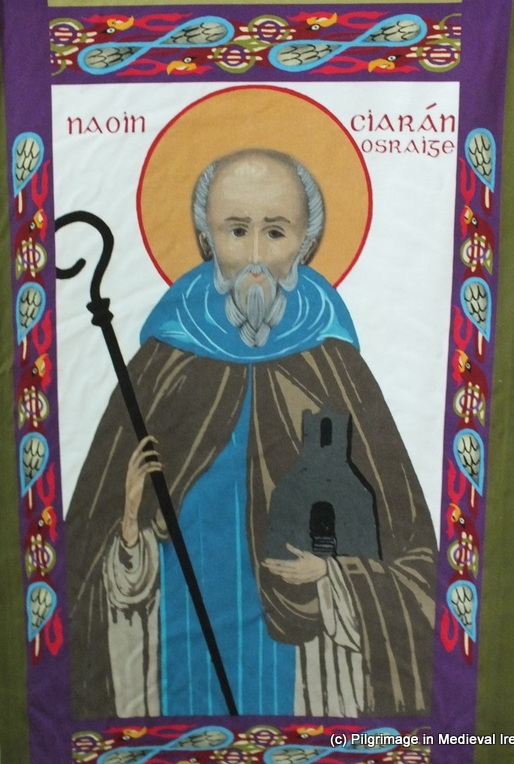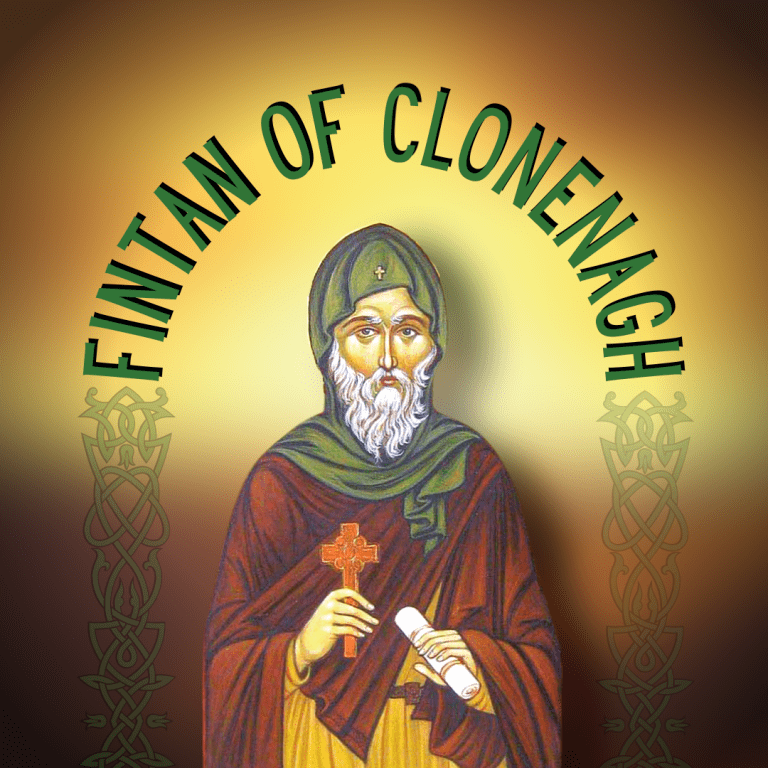
Image source Pilgrimage In Medieval Ireland
Material distilled from Omnium Sanctorum Hiberniae and Catholicireland.net
St. Ciarán of Saighir, also known as Ciarán the Elder or Ciarán Mac Luaigne, is alongside with Ailbhe, Ibar, and Declan, one of the four pre-patrician Irish Saints. That is, they were evangelising in Ireland before St. Patrick began his full Irish mission. St. Ciarán is considered “the first-born of the Irish saints”.
His story
Ciarán was born around 446 A.D. His father was Luaigne, a noble in Ossory. His mother was Liadan whom was from Cork. During her pregnancy, she had a dream of a star falling from the sky and resting on her. It was a prelude for her child to be, as Ciarán was to be specially gifted. Ciarán grew up bright & holy being loved by all. He was fond of animals, but most of all he treasured God. Ciarán met St. Patrick in Rome, and he was to become Patrick’s pre-cursor in Ireland. In effect he was a type of John the Baptist figure. It was St. Patrick who gave Ciarán a bell to help him on his Irish mission as when the bell sounded, it would mark the spot where God desired the foundation of a great spiritual centre. This eventually happened for Ciarán at Saighir.
Initially at Saighir, by a water spring, he built a hermitage of wattle, thin branches and mud plaster. The roof was thatched with grass and leaves. In his early days at his hermitage in the woods, injured wild animals such as wolves, deer and the like, would seek Ciarán’s help, having no fear for their lives in his presence. They in turn would help him too. Often doing tasks, difficult for a mere man.
His strict diet was herbs and barley bread, with a drink of only water. Ciarán imitated the spiritual life of the Desert Fathers, and modelled himself on St. John the Baptist, wearing animal skins and sleeping on the ground. He had angels minister to him from childhood. He lived a life of prayer, fasting and abstinence. With this austere life style, he attracted a following of disciples. He became the first Abbot at his large monastery at Saighir beside this hermitage in present day Co. Offaly. The monastery became a centre of learning and preaching. His mother Liadan, with other holy women, came to live nearby in a convent.
One day St. Patrick visited St. Ciarán’s monastery with a few of his men. Ciarán was not expecting such an esteemed visitor, and food was scarce at the monastery. This pre-cursor to Patrick prayed to God to provide, and suddenly his supplies of food multiplied miraculously. It was fitting for the great patron for Ireland who had had arrived.
On his deathbed, Ciarán predicted to his monks that in the future, the faith in Ireland would be distorted and the monasteries supressed. This was fulfilled with the advent of the Anglo-Norman invasion and at the protestant Reformation. The monastery at Saighir became the seat of the Diocese of Ossory for several centuries. Today the monastic ruins can be visited in the village of Clareen, in Co. Offaly. The water there has miraculous medicinal properties as Local residents say that the water that gathers around the cross cures warts.
Ciarán of Saighir reposed in the Lord around 530 A.D. The church celebrates Ciarán the elder on the 5th of March.
